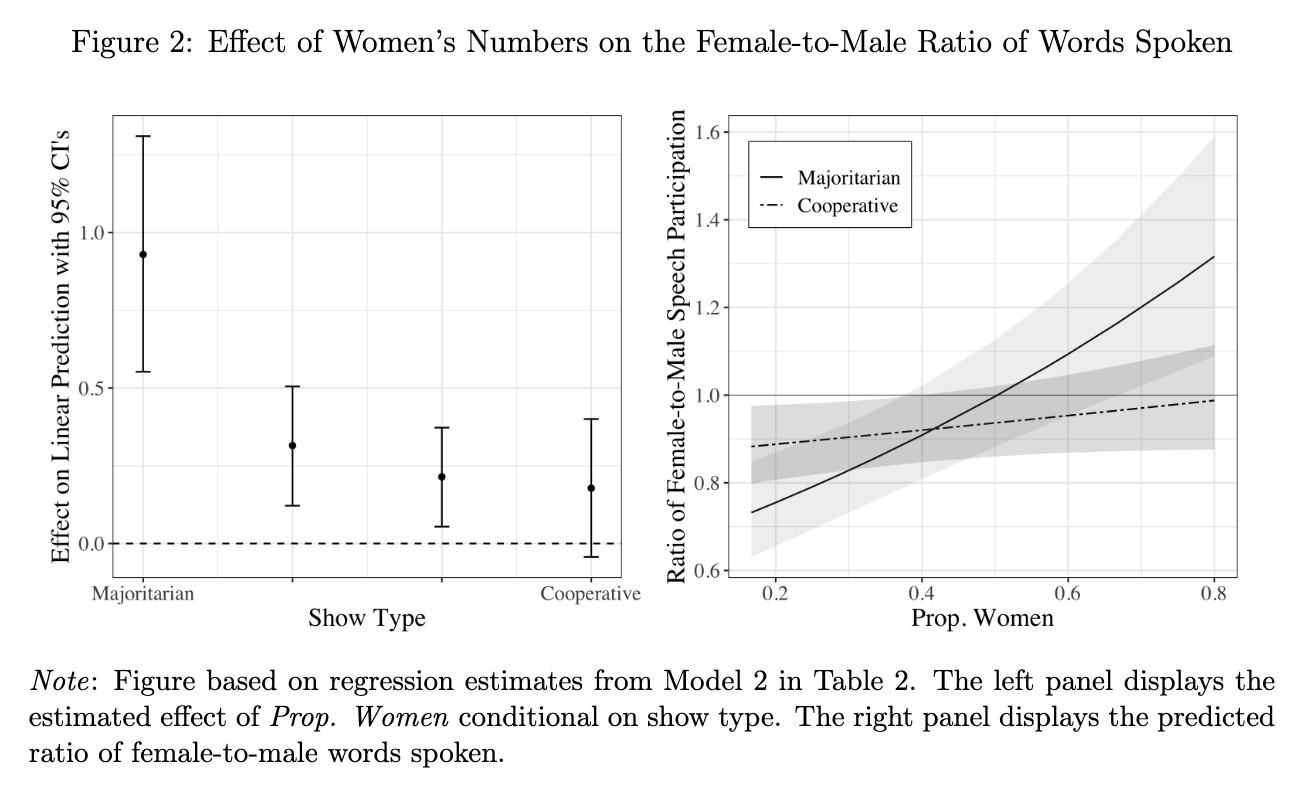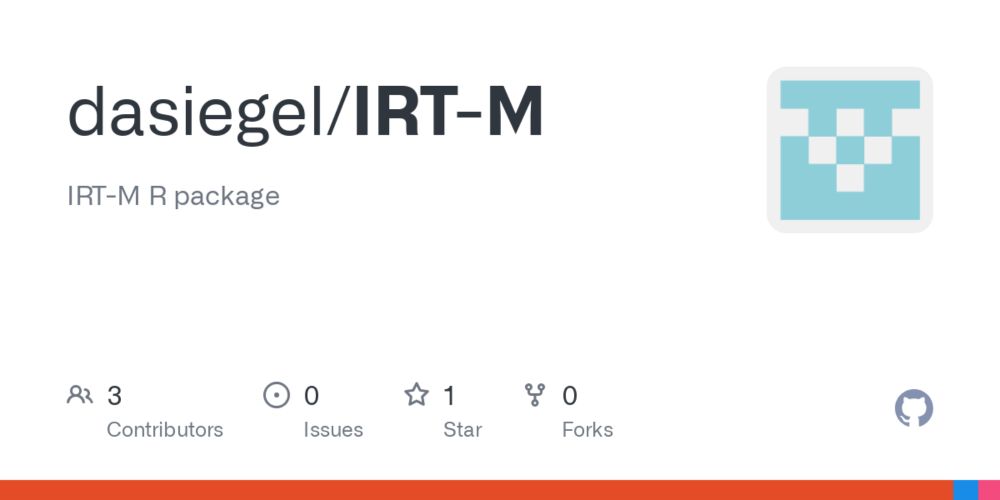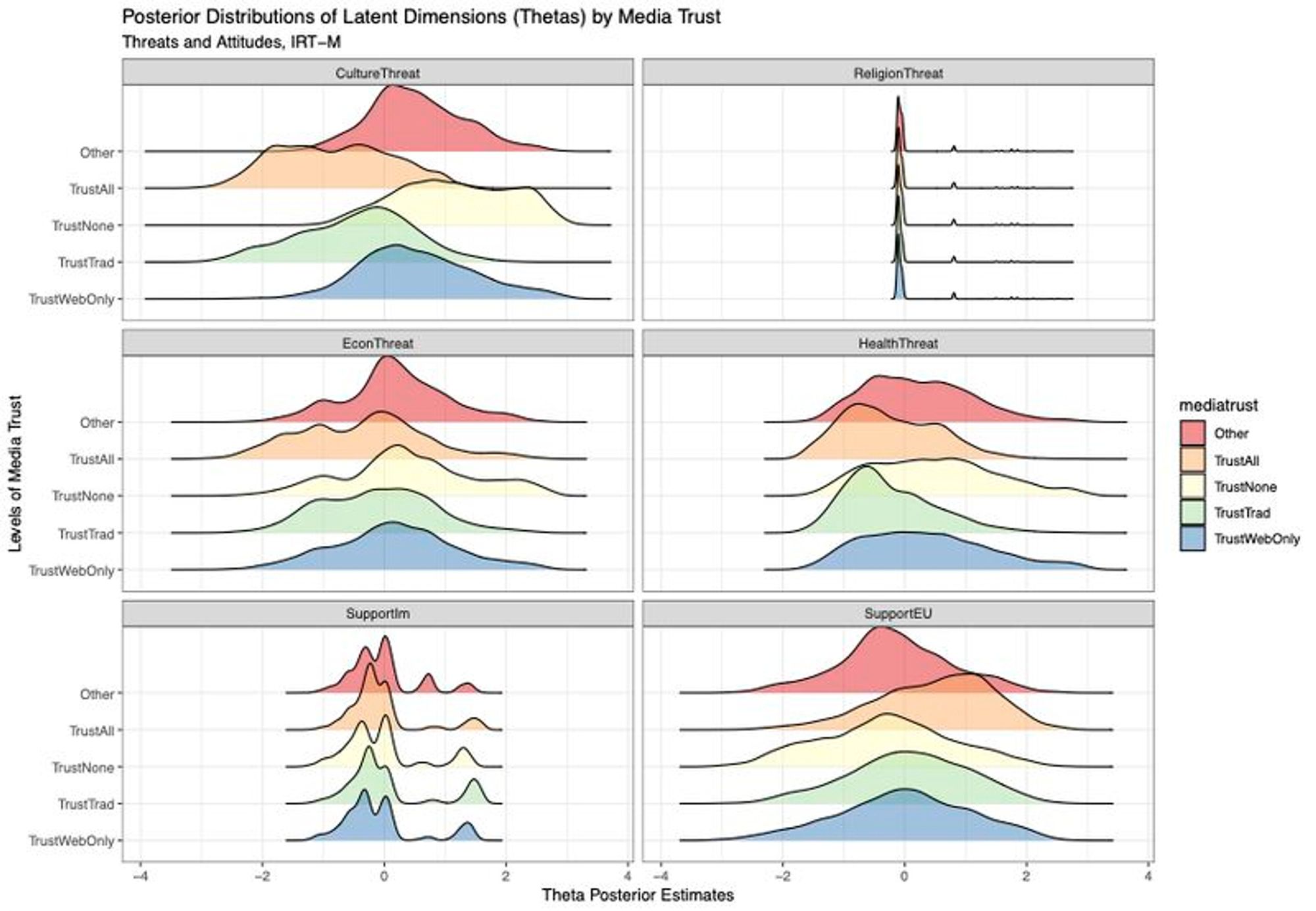I said this in my first-year grad research methods class, but it bears repeating. There are people who will tell you that you are not smart enough to understand something. Those people either don't understand the nature of intelligence, don't have your best interests at heart, or both. Ignore them.
Just accepted at JOP w/ Daniel Naftel @kshoub.bsky.social@jarededgerton.bsky.socialwww.journals.uchicago.edu/doi/10.1086/...


This is NSF-funded work, joint with Marco Morucci, Margaret Foster, Katie Webster, and So Jin Lee. None of whom are on Bluesky yet. (8/8)
There’s a lot more in the paper. For example, the figure shows how IRT-M can produce estimates of abstract concepts (sense of "threat", by the media sources that they trust) in data not designed to measure the concepts (the Eurobarometer survey). (6/8)
The package does the rest. The latent dimensions it captures can be correlated, and IRT-M discovers any such correlation from the data. The supervised steps ensure that the measures remain consistent across time and space. (5/8)
Then, researchers identify data sources and assess how the latent dimensions would show up in the data, which can depend on context. Then, they construct a constraint matrix that encodes dependencies between items in the data and the latent dimensions. (4/8)
We call this framework IRT-M, and it makes it easier for researchers to construct, measure, and present subtle or abstract concepts in their data. It’s a semi-supervised method. First, researchers identify theoretically meaningful latent dimensions. (3/8)

